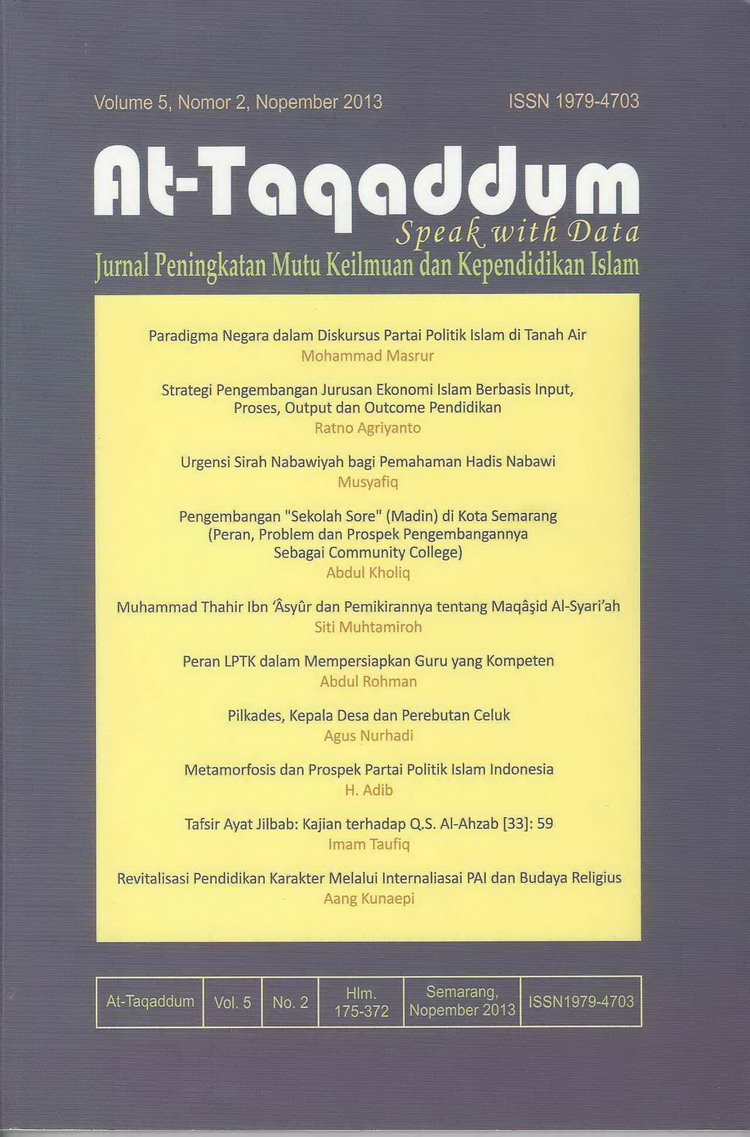TAFSIR AYAT JILBAB: KAJIAN TERHADAP Q.S. AL-AHZAB [33]:59
DOI:
https://doi.org/10.21580/at.v5i2.703Keywords:
Veil, interpretation of Al-Ahzab [33], 59.Abstract
Although the veil verses come when Muslim is in unsafe condition, it did not mean that the wearing of veil could be abandoned when it was safe. Hijab which remains the teachings of Islam must be considered; at least the veil became the ethic and aesthetic (tahsiniyyah). Islamic teachings are actually not on the headscarf, but it is to the usage as to cover the nakedness, which cover certain part of the body that are considered to be vulnerable and it could cause a scandal. In the prophet era, aurat is defined by the entired of body excluding the face, the palms and the soles of mature women. As for the male, it was between the knees and the navel. If the veil is used as the characteristic to distinguish between the free women and the female slaves, while in fact now female slaves are no longer to be found except slavery in another form, then the wearing of hijab at the moment is no longer an obligation. However, it does not mean wearing the hijab should be banned, especially if it is as accessories or complementary, but on how to formulate a genitals cover or Muslimah outfit.Downloads
Downloads
Published
How to Cite
Issue
Section
License
The copyright of the received article shall be assigned to the journal as the publisher of the journal. The intended copyright includes the right to publish the article in various forms (including reprints). The journal maintains the publishing rights to the published articles. Therefore, the author must submit a statement of the Copyright Transfer Agreement.*)

This work is licensed under a Creative Commons Attribution-ShareAlike 4.0 International License.
In line with the license, authors and third parties (readers, researchers, and others) are allowed to share and adapt the material. In addition, the material must be given appropriate credit, provided with a link to the license, and indicated if changes were made. If authors remix, transform or build upon the material, authors must distribute their contributions under the same license as the original.
________
*) Authors whose articles are accepted for publication will receive confirmation via email and send a Copyright Transfer Agreement.











